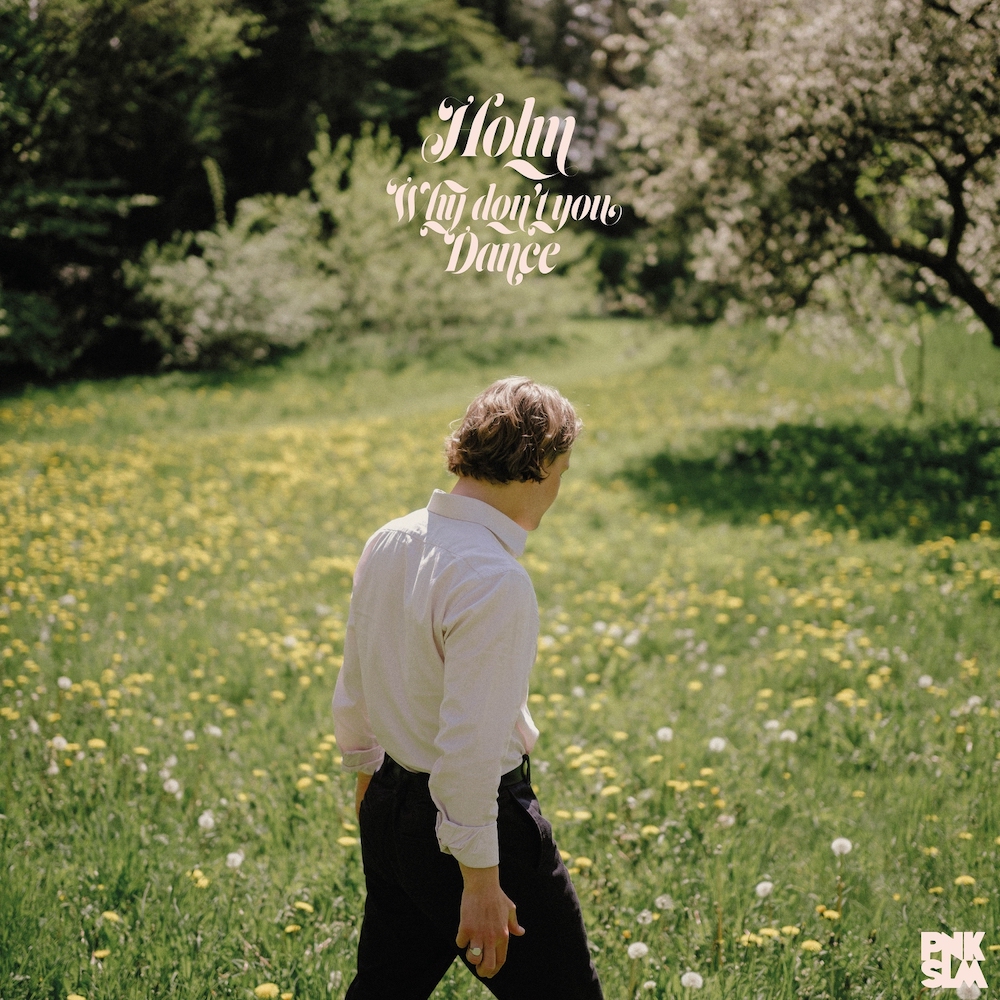In a year of outstanding post-punk releases, it’s understandable, if lamentable, that the Danish band Yung’s Ongoing Dispute flew under the radar for many (though it was a top personal pick of 2021). The album’s songs stretch hook-laden melodies over minutes of soaring and urgent rock. Heading the quartet is Mikkel Holm Silkjær, a vocalist who blends his falsetto with the spoken-word to add a palpable compassion to their work. Ongoing Dispute also marked the first time Silkjær felt confident enough to release a lyric sheet with an album (“I’d realised how important my lyrics are to my songs,” he said). On Why Don’t You Dance, his debut solo project released under the name Holm, he’s tapped into newfound personal depth.
Yes, the album was recorded by Yung bandmate Tobias Guldborg Tarp and co-produced with Neil R. Young (who also produced Ongoing Dispute), but, compared to his work with the band, these songs are looser and more intimate, their genre influences more varied. The alt country-tinged “Erase & Repeat” sways with swooning guitars and a pedal steel as Silkjær sings about coming to terms with being misunderstood as an artist (“All those hands I shook last night they don’t care about my scene”). “K’s Choice” is bathed in the noise reminiscent of Yung, yet front-and-center is Silkjær’s jangling guitar work: the song wouldn’t feel out of place on a Rolling Blackouts Coastal Fever record. The only odd choice on Why Don’t You Dance is the synth instrumental “Intermezzo” – its lack of evolution puts into question its two and a half minute runtime when 30 or 40 seconds would have sufficed.
Yet, overwhelmingly, Why Don’t You Dance is a consistent and focused record that highlights Silkjær’s approach to songwriting. “Valley of Dreams” rides along with a mid-tempo riff yet slowly opens into a call of roaring guitars and vocals. Silkjær takes a similar approach to “The Rope”, yet the song relies on a more rhythmic bass and Kristoffer Søndergaard’s thumping percussion that gives the song a sinister edge. Across the album, Silkjær’s voice is rich in yearning and reservation – he does both to great effect on “Valley of Dreams” and “Descending”. These peaks and valleys trace logical evolutions that always engage the listener.
Art is open to interpretation, and While Silkjær tackles this idea head-on through songs like “Erase & Repeat,” the album’s final track and namesake come from the Raymond Carver story “Why Don’t You Dance?” The song starts as a quiet guitar ballad with Silkjær crooning as if next to a campfire —the entrance of swirling synths and heavy piano keys only builds on this image (the work of Kevin Morby comes to mind). “As soon as I read the story, I wrote the last song for the album, which is about the catch-22 of wanting to get better, but worrying I wouldn’t keep producing good work if I did,” he said of the story’s influence. Yes, the songs on Why Don’t You Dance more than stand on their own merit, yet the literary reference does infuse a new significance.
“These are the most honest words I’ve ever written, and I’m nervous about exposing myself with them, but the process was very therapeutic,” Silkjær said of the lyrics on Why Don’t You Dance. Another excellent example of this sentiment is the album highlight “Descending”, a slow and drooping song that sounds like Silkjær’s acerbic take on slacker rock and almost an antithesis to his driving work with Yung. We hear him at his most vulnerable, delivering lines like “I was caught in disguise / I was tampering with life” with harrowing emotion. Silkjær isn’t slacking off or lazy, he’s anxious and overwhelmed. Whether listeners pick up on Silkjær’s emotions is out of his hands, but it’s a risk he’s willing to take.

